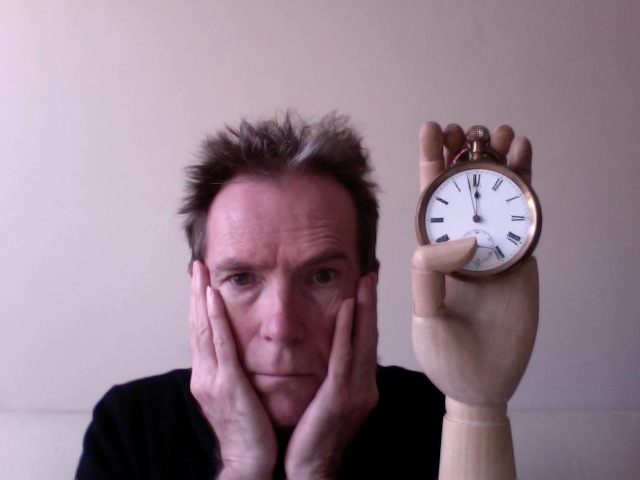Forget Storyboarding
Unless you are doing some kind of spectacular action or fantasy film (and you’re not) this is a waste of time. Sure there are a lot of storyboarding programs so you no longer have to draw them by hand. But you do not need this. You have something called a BRAIN. Chances are, you wrote this movie yourself and you “saw” it all in your head anyways.
Instead: Make a Shot List. What is a Shot List? It is of course, a list of shots. You need a Shot List for every scene in your movie, but once you get the rhythm down, you may be able to do a lot of it on the fly, if need be. Look at your scene. How many characters are there? (Hopefully no more than four – see my other article) Let’s say three. You now have three shots, because every character in the scene deserves their closeup. Next, you’ll want to “pull back” on the scene a little, maybe a medium shot of two of the characters, and a medium shot of the the third. (Two more shots.) Finally, you want a “Master Shot” of the whole room, all the action in the scene, from beginning to end. (One shot) Now, let’s list them in reverse order.
1. Master Shot
2. Medium Shot Person A and B
3. Medium Shot Person C
4. Close up Person A
5. Close up Person B
6. Close up Person C
Now, unless you are going for some kind of Sami Raimi-type of thing, that should basically cover your scene from beginning to end.
First thing you do, on the day of the shoot, is block the scene. Have your actors act it out as they would naturally do it in the space, and tell them not to worry about where the camera is. That’s YOUR job. Watch them do the whole scene. If, during the blocking of this scene you realize that the characters begin talking in one part of the house and end up in another, yell “Cut.” Every time the Master Shot has to pick up and move, that is another “scene” with its own list of closeups and medium shots.
Be on time. ALWAYS be early!
If you are late, it sends out a domino effect, which slows down production and morale. Have lunch on the 6 hour mark (as required by SAG) and make sure there are plenty of snacks.
Don’t be too ambitious in the number of scenes/shots, but be not too tame, either.
You should always either be filming, rehearsing, or setting up for the next shot. Professional film sets break down their scenes into eighths of a page – that tells you how slow and methodical they can be. You don’t have that kind of luxury.
4. Try to have only one location per day.
Every time you do a “company move” you are adding hours to your day. Group all the scenes together that have the same location, regardless of their order in the film. When writing your script, make sure you eliminate unnecessary locations- or simply don’t come up with a story that has one thousand locations. Location is one of the most important things to think about when writing a low budget script.
5. Use as few extras as you can.
In a microbudget film, there isn’t enough money to pay even the basic $54/8 hours a non-union extra charges. This means it’s going to be incredibly hard to get anyone to do it! Besides, a lot of extras adds up to a lot of bodies on the set, and a lot more mouths to feed at lunch time. You can also get an intern and use them as extras.
6. Avoid fancy lighting.
The number one thing that slows down a film shoot is setting up and moving bulky lighting equipment. The Big Boys can spend all day and night with fancy globes and spotlights, but you don’t have the time. Cameras nowadays (especially those groovy SLR cameras that shoot HD) are really great with light – you can do so much with so little – use that to your advantage.
7. Move your camera around like a photo camera.
It used to be, cameras were bulky, had to be on a dolly, and had to be reloaded every 10 minutes or so of film. Now you don’t have any of these to worry about, so “get in there” with the camera. Keep it rolling. Instead of yelling “action” and “cut” all the time, just direct your actors off camera – have them do what is called a “series” of takes in a row, without stopping and starting.
8. Try to stay calm and focused.
Breathe in, breathe out. You most likely will have to be your own First AD (the person who actually keeps the ball rolling on major film sets) so prepare to kick your own ass. Oh, and of course, don’t forget to have fun – you are living the dream of directing your movie!!!
 Stephen Moramarco is a writer, actor, director and musician. He has been DIY-ing indie projects for over 20 years. His self-released indie CD Hill of Beans was a top-ten hit on college radio and the song “Satan, Lend Me a Dollar” was featured on Showtime’s Weeds. His latest project is his indie film debut, entitled“The Great Intervention”, which he made for $5000. He will be sharing his own insights and opinions on the current DIY revolution taking over… well, just about everything!
Stephen Moramarco is a writer, actor, director and musician. He has been DIY-ing indie projects for over 20 years. His self-released indie CD Hill of Beans was a top-ten hit on college radio and the song “Satan, Lend Me a Dollar” was featured on Showtime’s Weeds. His latest project is his indie film debut, entitled“The Great Intervention”, which he made for $5000. He will be sharing his own insights and opinions on the current DIY revolution taking over… well, just about everything!




